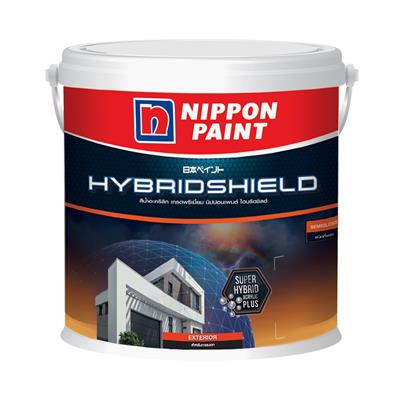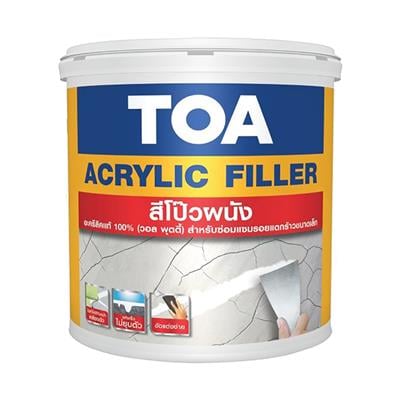Home Inspection Checklist: Know Before It's Too Late

Everything on earth has a lifespan, including materials, equipment, and even our homes. Exposure to wind, sun, and rain can cause our homes to deteriorate over time. So, it's important to inspect our homes regularly, especially during the New Year. This will help us identify any potential problems and make repairs before they cause more serious damage.
1. Exterior Inspection Checklist
Here is a checklist of things to look for when inspecting the exterior of your home.
• Paint : One of the most common problems with exterior paint is fading. This is caused by exposure to the sun, wind, and rain. If the paint on your home is starting to fade, it's time to repaint. When choosing a new color paint, look for a quality paint that is designed for exterior use. It should be water-resistant and fade resistant. It may cost more than a regular paint, but it's worth the investment.

Ext. Paint SG NIPPON HYBRIDSHIELD Size 1 gl. BASE B
• Cracks are one of the most common problems that homeowners face. Small cracks are usually not a cause for concern. They can be caused by changes in temperature or settling, and they can be easily repaired with a spackle. If you find a large crack in your home, it's important to have it inspected by a professional. A professional can determine the cause of the crack and recommend the best way to repair it.

Acrylic Filler TOA ALFIL Size 1 Gallon White
• Floor settlement is a problem that can be difficult to spot, but it's important to check for it regularly. The best way to check for floor settlement is to use a level. Place a level on the floor in different areas of your home. If you see any gaps between the level and the floor, it's a sign that the floor has settled. If you find a floor settlement, it's important to have it repaired as soon as possible. If the settlement is more severe, you may need to hire a professional contractor to repair the foundation.

• Roof of the house: This may be a point that is overlooked because it is not a problem that can be seen immediately. You must climb up to see it. Therefore, you should inspect the roof at least once a year, either during the New Year or before the rain. The points that you should pay special attention to are the roofing materials, the screws that secure the tiles to the roof frame, the gutters, and drainpipes. If you find any problems, repair them immediately or hire a professional to inspect and repair them.

2. Interior Inspection Checklist
After inspecting the exterior of your home, it's time to move inside. Here are some common problems to look for.
• Paint: Paint problems inside your home are easy to spot, just like they are on the outside. Most of the time, the problem is peeling paint. This can be fixed by simply painting over it. However, if the problem is moisture from rainwater seeping through the walls, which can lead to mold and bacteria growth that is harmful to occupants, you can fix it by using a waterproof acrylic sealant. You can find the steps to fix this problem in the article " Prepare for Damp Walls During the Rainy Season."
• Cracks: Cracks inside your home are like cracks outside, but they may occur more slowly because they are not exposed to the elements as much. You can use a spackle to cover up cracks and fix the problem.
• Tiles: If your home has tiles, be sure to check the floor carefully to see if any of the tiles are bulging up from the surface. These problems can be caused by laying the tiles too close together without leaving any room for expansion. They can also be caused by "sausage-style" tiling, which can trap moisture and cause the tiles to bulge or explode. You can find instructions on how to lay tiles with cement adhesive in the article "How To Fix Cracked, Broken, Or Exploded Tiles."
3. Electrical System Inspection
An electrical system inspection doesn't have to be done at the end of the year. You can do it throughout the year or when you notice that your electricity bill is higher than usual. You can immediately check for problems, such as wires, plugs, switches, and all electrical appliances in your home. In addition, test the operation of the breaker to see if it is still working normally. This will help to enhance safety.

4. Water System Inspection
Now that we've checked the electrical system, let's move on to the water system. It's just as important. First, close all the faucets in your home and watch the water meter. If the numbers are moving, there's a leak. Carefully inspect to find the leak and repair it. If the leak is in a difficult-to-reach spot, such as the ceiling, the wall, or if you can't find the leak, consult a plumber to determine how to fix it.


In addition to the four topics mentioned above, I would also recommend checking for environmental factors outside your home that could cause problems. For example, you should trim the branches of trees that touch your home before they cause damage. You should also be careful not to let the roots of large trees around your home grow and spread, which could cause your home to collapse. These are all details that should not be overlooked. Take care of your home's health like you would take care of your own health, so that your home will last for many years without any major problems.
Credit for images: claimmanagementgroup.com, fantasticfascia.com, powertec.ca, bl3inc.com
• You can buy Construction Chemicals at our stores or online shopping. Click
Other interesting articles:
Recommended products
















